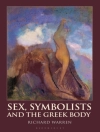One of the most remarkable artistic achievements of the Mughal Empire was the emergence in the early seventeenth century of portraits of identifiable individuals, unprecedented in both South Asia and the Islamic world. Appearing at a time of increasing contact between Europe and Asia, portraits from the reigns of the great Mughal emperor-patrons Akbar, Jahangir
and Shah Jahan are among the best-known paintings produced in South Asia. In the following centuries portraiture became more widespread in the visual culture of South Asia, especially in the rich and varied traditions of painting, but also in sculpture and later prints and photography.
This collection seeks to understand the intended purpose of a range of portrait traditions in South Asia and how their style, setting and representation may have advanced a range of aesthetic, social and political functions. The chapters range across a wide historical period, exploring ideals of portraiture in Sanskrit and Persian literature, the emergence and political symbolism of Mughal portraiture, through to the paintings of the Rajput courts, sculpture in Tamil temples and the transformation of portraiture in colonial north India and post-independence Pakistan.
This specially commissioned collection of studies from a strong list of established scholars and rising stars makes a significant contribution to South Asian history, art and visual culture.
Crispin Branfoot
Portraiture in South Asia since the Mughals [EPUB ebook]
Art, Representation and History
Portraiture in South Asia since the Mughals [EPUB ebook]
Art, Representation and History
Cumpărați această carte electronică și primiți încă 1 GRATUIT!
Format EPUB ● Pagini 288 ● ISBN 9781838608965 ● Editura Bloomsbury Publishing ● Publicat 2018 ● Descărcabil 3 ori ● Valută EUR ● ID 6937383 ● Protecție împotriva copiilor Adobe DRM
Necesită un cititor de ebook capabil de DRM












